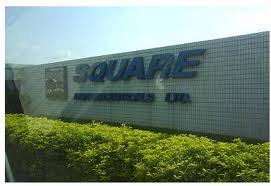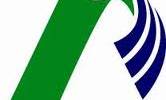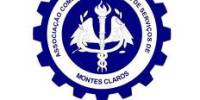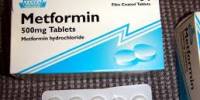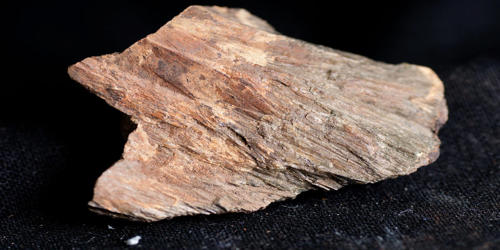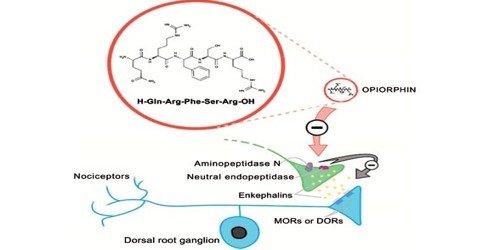Background
Financial Statement includes the Balance Sheet, Income statement and other statement which determine the company’s performance. Financial ratio analysis is the calculation and comparison of ratios which are derived from information in company’s financial statements. Financial ratios are the analyst’s microscope. It allowed them to get a better view of the firm’s financial health than just looking at the raw financial statements.
BRIEF HISTORY
Square Pharmaceuticals Ltd. is a renowned company in Bangladesh. It is a flagship company in the pharmaceutical industry which has reached this mountain of success by fighting many potential competitors like BEXIMCO Pharma, INCEPTA, ACME, RENETA, OPSONIN, SK+F, SANOFI-AVENTIS etc. It initially started as a Partnership in 1958. It was incorporated as a Private Ltd. Company in 1964 and converted into Public Limited Company in 1991. Its initial public offering started in Dhaka and Chittagong stock exchange simultaneously in 1995. Their mission is to produce and provide quality & innovative healthcare relief for people, maintain stringently ethical standard in business operation also ensuring benefit to the shareholders, stakeholders and the society at large.
Vision
They view business as a means to the material and social wellbeing of the investors, employees and the society at large, leading to accretion of wealth through financial and moral gains as a part of the process of the human civilization.
Mission
Their Mission is to produce and provide quality & innovative healthcare relief for people, maintain stringently ethical standard in business operation also ensuring benefit to the shareholders, stakeholders and the society at large.
Objectives
Their objectives are to conduct transparent business operation based on market mechanism within the legal & social frame work with aims to attain the mission reflected by our vision.
Corporate Focus
Their vision, our mission and our objectives are to emphasize on the quality of product, process and services leading to growth of the company imbibed with good governance practices.
Corporate History
Year of Establishment (Initially as a Partnership) : 1958
Incorporated as a Private Limited Company : 1964
Technical Collaboration Agreement with
Janssen Pharmaceuticals of Belgium
(a subsidiary of Johnson & Johnson International Ltd. ) : 1975
Technical Collaboration Agreement with
F. Hoffman-La Roche & Co. Ltd. : 1984
Converted into Public Limited Company : 1991
Initially Public Offering (IPO) : 1994
Stock Exchange Listings : 1995
Agreement with M/s. Bovis Tanvec Ltd. of UK for
implementation of Dhaka Plant : 1996
Awarded ISO-9001 Certificate : 1998
Awarded UK-MHRA Certificate : 2007
Business Lines : Manufacturing and Marketing of
Pharmaceutical Finished
Products, Basic Chemicals,
AgroVet Products and Pesticide
Products
Authorized Capital : Tk. 5,000 million
Paid-up Capital : Tk. 1,207.22 million
Number of Employees : 3,811
Subsidiary Company
Square Spinnings Ltd.
Square Cephalosporins Ltd.
Square Biotechs Ltd.
Square Multi Fabrics Ltd.
Associate Company
Square Textiles Ltd.
Square Knit Fabrics Ltd.
Square Fashions Ltd.
Square Hospitals Ltd.
Problem Identification
Pharmaceutical company is very important for every country. In our country, pharmaceutical sector is booming. This pharmaceutical sector involves with various medicine production, distribution and other works. One country’s health and nutrition sectors development almost depends on the pharmaceutical sector because they provide the medicine which refers by the doctor. If they don’t produce quality or standard medicine the patient will not recover from illness. The nation will net get healthy human resource.
There are many pharmaceutical companies in Bangladesh now. Square pharmaceutical company is one of them. In the report we will see how they perform in Bangladesh with their financial statement analysis.
Objective of the Study
In Bangladesh, pharmaceutical sector is one of the boost sectors. This sector develops their products and service rapidly. They create fantastic opportunities to export medicine from Bangladesh to other country. As a result they earn huge amount of profit. They not only export the medicine but also meet the local demand of medicine. To address the followings components in this paper:
- To know the liquidity ration
- To know financial ration
- To know coverage ratio
- To know activity ratio
- To know profitability ratio
- And also trend analysis and common size analysis
Limitation of the Study
Limitation of the study is about:
a) Based on only secondary source of data
b) Time bound restrict me for further research on the topic
c) There is not possible to analyze every ratio of the financial statement
Finding
Square Pharmaceuticals Ltd.
Balance Sheet
As on 31.03.2009 | As on 31.03.2008 | As on 31.03.2007 | |
Non-Current assets | 9,407,730,001 | 8,291,290,984 | 6,804,429,292 |
Property, Plant and Equipment-Carrying Value | 4,899,679,832 | 4,088,432,171 | 3,531,003,509 |
Capital Work-in-Progress | – | 591,114,649 | 481,239,419 |
Investment – Long Term (at Cost) | 4,508,050,169 | 3,611,744,164 | 2,792,186,364 |
Current Assets | 3,843,512,855 | 4,411,836,436 | 3,682,510,712 |
Inventories | 2,098,755,231 | 2,026,736,322 | 1,544,191,798 |
Trade Debtors | 477,562,002 | 360,245,646 | 322,864,637 |
Advances, Deposits and Prepayments | 260,330,162 | 288,806,440 | 236,455,395 |
Investment in Marketable Securities (at Cost) | 20,250,000 | 20,250,000 | 20,250,000 |
Short Term Loan | 693,157,720 | 1,510,502,334 | 1,418,893,703 |
Cash and Cash Equivalents | 293,457,740 | 205,295,694 | 139,855,179 |
TOTAL ASSETS | 13,251,242,856 | 12,703,127,420 | 10,486,940,004 |
Shareholders’ Equity | 9,949,397,634 | 8,417,040,705 | 7,333,257,612 |
Share Capital | 1,207,224,000 | 894,240,000 | 596,160,000 |
Share Premium | 2,035,465,000 | 2,035,465,000 | 2,035,465,000 |
General Reserve | 105,878,200 | 105,878,200 | 105,878,200 |
Tax Holiday Reserve | 1,101,935,237 | 1,101,935,237 | 1,101,935,237 |
Retained Earnings | 5,498,895,197 | 4,279,522,268 | 3,493,819,175 |
Non-Current Liabilities | 660,976,668 | 785,241,612 | 598,116,106 |
Long Term Loans – Secured | 449,757,608 | 602,584,615 | 492,569,379 |
Deferred Tax Liability | 211,219,060 | 182,656,997 | 105,546,727 |
Current Liabilities | 2,640,868,554 | 3,500,845,103 | 2,555,566,286 |
Short Term Bank Loans | 1,534,345,782 | 2,669,693,184 | 1,818,777,878 |
Long Term Loans – Current Portion | 295,590,601 | 297,002,646 | 225,176,449 |
Trade Creditors | 124,222,699 | 100,953,258 | 60,601,743 |
Liabilities for Expenses | 69,573,702 | 32,290,235 | 24,565,248 |
Liabilities for Other Finance | 617,135,770 | 400,905,780 | 426,444,968 |
TOTAL EQUITY AND LIABILITIES | 13,251,242,856 | 12,703,127,420 | 10,486,940,004 |
Square Pharmaceutical Ltd
Income Statement
| For the year ended 31-03-09 | For the year ended 31-03-08 | For the year ended 31-03-07 | |
| NET TURNOVER | 9,820,796,568 | 8,257,843,739 | 7,500,811,349 |
| Less: COST OF GOODS SOLD | 5,672,565,973 | 4,856,061,933 | 4,268,447,662 |
| GROSS PROFIT | 4,148,230,595 | 3,401,781,806 | 3,232,363,687 |
| Less: Operating Expenses | 1,779,793,368 | 1,692,475,988 | 1,406,611,448 |
| PROFIT FROM OPERATIONS | 2,368,437,227 | 1,709,305,818 | 1,825,752,239 |
| Other Income | 665,520,915 | 604,628,504 | 220,144,368 |
| Less: Financial Expenses | 397,135,963 | 351,868,423 | 236,845,084 |
| NET PROFIT BEFORE WPPF | 2,636,822,179 | 1,962,065,899 | 1,809,051,523 |
| Less: Allocation for WPPF | 125,562,961 | 93,431,709 | 86,145,311 |
| NET PROFIT BEFORE TAX | 2,511,259,218 | 1,868,634,190 | 1,722,906,212 |
| Less: Provision for Income Tax | 592,644,226 | 409,660,827 | 347,984,083 |
| Less: Provision for Deferred Income Tax | 28,562,063 | 77,110,270 | 71,679,289 |
| NET PROFIT AFTER TAX | 1,890,052,929 | 1,381,863,093 | 1,303,242,840 |
| Earnings Per Share (EPS) | 156.56 | 114.47 | 145.74 |
Financial Ratio: Financial ratios are useful indicators of a firm’s performance and financial situation. Financial ratios can be used to analyze trends and to compare the firm’s financials to those of other firms.
Uses of Ratio Analysis: Ratios are used both internal and external analyst:
- Internal Uses
- Planning
- Evaluation of management
- Focus on investment for various assets and assets efficiency
- Understanding how suppliers of funds analyze the firm
- External Uses
- Credit granting by the financial institution of individual
- Performance monitoring
- Investment decisions
- Policy making decision
- Focus on the profitability and long term health of the firm
- Focus on the long term cash flow of the firm
- Focus on the liquidity of the firm
Categories of Financial Ratio
Financial ratios can be classified according to the information they provide. The following types of ratios frequently are used:
- Liquidity Ratio
- Financial Leverage Ratio
- Coverage Ratio
- Activity Ratio
- Profitability Ratio
Trend Analysis
Trend Analysis is important for the company. The value of the variable tends to increase or decrease over long period of time. In this aspect financial health of the firm either improves or not can be seen in the trend analysis.
Common Size Analysis: It is an analysis of percentage of financial statements where all balance sheet items are divided by total assets and all income statement items are divided by net sales or revenue.
Liquidity Ratio
Liquidity ratios are the first ones to come in the picture. These ratios actually show the relationship of a firm’s cash and other current assets to its current liabilities. Two ratios are discussed under Liquidity ratios. They are:
- Current ratio
- Quick/ Acid Test ratio.
- Current ratio: This ratio indicates the extent to which current liabilities are covered by those assets expected to be converted to cash in the near future. Current assets normally include cash, marketable securities, accounts receivables, and inventories. Current liabilities consist of accounts payable, short-term notes payable, current maturities of long-term debt, accrued taxes, and other accrued expenses (principally wages).
- Quick/ Acid Test ratio: This ratio indicates the firm’s liquidity position as well. It actually refers to the extent to which current liabilities are covered by those assets except inventories. Companies with less than 1 cannot pay their current liabilities and should be looked at with extreme care.
Current Assets (2008-2009): Cash and Cash Equivalence + Inventories + Trade Debtor + Advance, Deposits and Payment + Investment at Marketable Securities (at cost) + Short Term Loan
= 293,457,740 +2,098,755,231 + 477,562,002 + 260,330,162 + 20,250,000 + 693,157,720
= 3,843,512,855
Current Assets (2007-2008): Cash and Cash Equivalence + Inventories + Trade Debtor + Advance, Deposits and Payment + Investment at Marketable Securities (at cost) + Short Term Loan
= 205,295,694 + 2,026,736,322 + 360,245,646 + 288,806,440 + 20,250,000 + 1,510,502,334
= 4,411,836,436
Current Assets (2006-2007): Cash and Cash Equivalence + Inventories + Trade Debtor + Advance, Deposits and Payment + Investment at Marketable Securities (at cost) + Short Term Loan
= 139,855,179 + 1,544,191,798 + 322,864,637 + 236,455,395 + 20,250,000 + 1,418,893,703
= 3,682,510,712
Current Liability (2008-2009): Short Term Bank Loans + Long Term Loans – Current Portion + Trade Creditors + Liabilities for Expenses + Liabilities for Other Finance
= 1,534,345,782 + 295,590,601 + 124,222,699 + 69,573,702 + 617,135,770
= 2,640,868,554
Current Liability (2007-2008): Short Term Bank Loans + Long Term Loans – Current Portion + Trade Creditors + Liabilities for Expenses + Liabilities for Other Finance
= 2,669,693,184 + 297,002,646 + 100,953,258 + 32,290,235 + 400,905,780
= 3,500,845,103
Current Liability (2006-2007): Short Term Bank Loans + Long Term Loans (Current Portion) + Trade Creditors + Liabilities for Expenses + Liabilities for Other Finance
= 1,818,777,878 + 225,176,449 + 60,601,743 + 24,565,248 + 426,444,968
Inventories:
2008-2009: Raw Materials + Packing Materials + Work-in-Process + Finished Goods + Spares & Accessories + Goods in Transit
= 712,447,113 + 203,170,462 + 146,340,693 + 568,607,732 + 99,673,071 + 368,516,160
= 2,098,755,231
2007-2008: Raw Materials + Packing Materials + Work-in-Process + Finished Goods + Spares & Accessories + Goods in Transit
= 688,846,968 + 186,341,475 + 141,106,414 + 581,543,862 + 87,243,576 + 341,654,027
= 2,026,736,322
2006-2007: Raw Materials + Packing Materials + Work-in-Process + Finished Goods + Spares & Accessories + Goods in Transit
= 562,131,687 + 166,890,495 + 119,969,662 + 458,007,065 + 90,596,538 + 146,596,351
= 1,544,191,798
Table 1: Calculation of Current Ratio and Quick Ratio
Year | Current Assets (I) | Current Liability (II) | Inventories (III) | Current Ratio IV= I ÷ II | Quick Ratio V = (I – III) ÷ II |
| 2009 | 3,843,512,855 | 2640868554 | 2098755231 | 1.46 | 0.66 |
| 2008 | 4,411,836436 | 3500845103 | 2026736322 | 1.26 | 0.68 |
| 2007 | 3682510712 | 2555566286 | 1544191798 | 1.44 | 0.84 |
Comment:
Current ratio of Square Pharmaceuticals Ltd. shows that the ability of the company to meet the current liabilities with available current assets was decreased in the year 2008 and again increased n 2009. If we take a closer look on the balance sheet, this assumption gets a more realistic touch. Year by year assets have gone slightly up and the liabilities as well, but proportionately assets were a littler higher than the liabilities which actually reflected as a marginal increase in the ratio. As the current ratio is not consistent the management should keep keen eyes in this regard.
The Quick ratio shows the decreasing trend. It indicates that the company is so much depends on the inventories to meet the current liability. Their ratio is so much weak to cover an unexpected draw down of liabilities.
Financial Leverage Ratio
Financial leverage ratio shows the extent that debt is used in a company’s capital structure. It may be defined as the use of fixed financial charges in the firm’s capital structure t magnifies the Earning Per Share.
- Debt to Equity Ratio
- Debt to Asset Ratio
A. Debt to Equity Ratio: It indicates what proportion of the equity and debt using the company to finance it assets. Sometimes investors uses only long term debt instead of total liabilities for a more stringent test.
- A ratio greater than one means assets are mainly financed with debt, less than one means equity provides a majority of the financing.
- If the ratio is high (financed more with debt) then the company is in a risky position. Especially if the rate of interest are on the rise.
Total Debt (2008-2009): Short Term Bank Loans + Long Term Loans – Current Portion + Trade Creditors + Liabilities for Expenses + Liabilities for Other Finance + Loan Term Loan (secured) + Deferred Tax Liability
= 1,534,345,782 + 295,590,601 + 124,222,699 + 69,573,702 + 617,135,770 + 449,757,608 + 211,219,060
= 3301845222
Total Debt (2007-2008): Short Term Bank Loans + Long Term Loans – Current Portion + Trade Creditors + Liabilities for Expenses + Liabilities for Other Finance + Loan Term Loan (secured) + Deferred Tax Liability
= 2,669,693,184 + 297,002,646 + 100,953,258 + 32,290,235 + 400,905,780 + 602,584,615 + 182,656,997
= 428,60,86715
Total Debt (2006-2007): Short Term Bank Loans + Long Term Loans – Current Portion + Trade Creditors + Liabilities for Expenses + Liabilities for Other Finance + Loan Term Loan (secured) + Deferred Tax Liability
= 1,818,777,878 + 225,176,449 + 60,601,743 + 24,565,248 + 426,444,968 + 492,569,379 + 105,546,727
= 315,36,82392
Shareholder’s Equity (2008-2009): Share Capital + Share Premium + General Reserve + Tax Holiday Reserve + Retain Earnings
= 1,207,224,000 + 2,035,465,000 + 105,878,200 + 1,101,935,237 + 5,498,895,197
= 9,949,397,634
Shareholder’s Equity (2007-2008): Share Capital + Share Premium + General Reserve + Tax Holiday Reserve + Retain Earnings
= 894,240,000 + 2,035,465,000 + 105,878,200 + 1,101,935,237 + 4,279,522,268
= 8,417,040,705
Shareholder’s Equity (2006-2007): Share Capital + Share Premium + General Reserve + Tax Holiday Reserve + Retain Earnings
= 596,160,000 + 2,035,465,000 + 105,878,200 + 1,101,935,237 + 3,493,819,175
= 7,333,257,612
Table 2: Debt to Equity Ratio
Year | Debt (I) | Equity (II) | Debt to Equity Ratio III = I ÷ II |
| 2009 | 3301845222 | 9949397634 | 0.33 |
| 2008 | 4286086715 | 8417040705 | 0.51 |
| 2007 | 3153682392 | 7333257612 | 0.43 |
Debt to Asset Ratio: It indicates what proportion of the company’s assets is being financed through debt. It is so much similar to the debt equity ratio. A ratio under 1 means a major portion of assets are financed with equity and above 1 means they are financing more by debt. Furthermore we can interpret a high ratio as a highly debt leverage firm. When a company with high ratio then the company is also on high risk, especially in an increasing rate of interest market.
Total Debt (2008-2009): Short Term Bank Loans + Long Term Loans – Current Portion + Trade Creditors + Liabilities for Expenses + Liabilities for Other Finance + Loan Term Loan (secured) + Deferred Tax Liability
= 1,534,345,782 + 295,590,601 + 124,222,699 + 69,573,702 + 617,135,770 + 449,757,608 + 211,219,060
= 3301845222
Total Debt (2007-2008): Short Term Bank Loans + Long Term Loans – Current Portion + Trade Creditors + Liabilities for Expenses + Liabilities for Other Finance + Loan Term Loan (secured) + Deferred Tax Liability
= 2,669,693,184 + 297,002,646 + 100,953,258 + 32,290,235 + 400,905,780 + 602,584,615 + 182,656,997
= 428,60,86715
Total Debt (2006-2007): Short Term Bank Loans + Long Term Loans – Current Portion + Trade Creditors + Liabilities for Expenses + Liabilities for Other Finance + Loan Term Loan (secured) + Deferred Tax Liability
= 1,818,777,878 + 225,176,449 + 60,601,743 + 24,565,248 + 426,444,968 + 492,569,379 + 105,546,727
= 315, 36, 82392
Total Assets:
2008-2009: Property Plant and Equipment Carrying Value + Investment Long term (at cost) + Current Assets
= 4,899,679,832 + 4,508,050,169 + 3843,512,855
2007-2008: Property Plant and Equipment Carrying Value + Capital Work In progress + Investment Long term (at cost) + Current Assets
= 4,088,432,171 + 591,114,649 + 3,611,744,164 + 4,411,836,436
2006-2007: Property Plant and Equipment Carrying Value + Capital Work In progress + Investment Long term (at cost) + Current Assets
= 3,531,003,509 + 481,239,419 + 2,792,186,364 + 3,682,510,712
From the financial statement of the Square Pharmaceutical we get the following results:
Table 3: Debt to Asset Ratio
Year | Debt (I) | Assets (II) | Debt to Asset Ratio III = I ÷ II |
| 2009 | 3301845222 | 13251242856 | 0.25 |
| 2008 | 4286086715 | 12703127420 | 0.34 |
| 2007 | 3153682392 | 10486940004 | 0.30 |
Comment:
Debt to equity ratio has increased in the year 2008 and then decreased in the year 2009. Square Pharmaceuticals Ltd. has increased their debt financing from 2007 to 2008 and then again decreased in the year 2009. The management should keep the debt to equity ratio in a balance position.
Debt to total asset ratio also increased in 2008 and then decreased in 2009. The assets of Square Pharmaceuticals Ltd. for 2007 are supported by debt financing more than 2008. But it decreased in 2009. as we know that the ratio the greater the financing risk higher. So, the company should keep a moderate debt to asset ratio.
Coverage Ratio
Coverage ratio relates the financial charges of a firm to its ability to service of cover them.
Interest Coverage Ratio: It indicates the firm’s ability to cover interest charges. It is also called times interest earned. The higher the ratio the greater the likelihood that the company could cover its interest payments without difficulty. The value of the ratio indicates the firm’s ability to cover annual interest by same times with operating income. The ratio also sheds some light on the firms’ capacity to take on new debt.
EBIT (2008-2009): Gross Turn Over – Cost of goods sold – selling and distribution expense – administrative expense
= 11,366,597,928 – 1,545,801,360 – 5,672,565,973 – 1,319,362,317 – 460,431,051
= 2,368,437,227
EBIT (2007-2008): Gross Turn Over – Cost of goods sold – selling and distribution expense – administrative expense
= 9,565,715,902 – 1,307,872,163 – 4,856,061,933 – 1,220,979,268 – 471,496,720
= 1,709,305,818
EBIT (2006-2007): Gross Turn Over – Cost of goods sold – selling and distribution expense – administrative expense
= 8,711,034,758 – 1,210,223,409 – 4,268,447,662 – 1,000,132,914 – 406,478,534
Interest Charges (2008-2009): Interest on cash credit + Interest on Overdraft + Interest on LATR + Interest on Short term loan + Interest on Lease + Interest on long term loan
= 21,820,760 + 37,764,410 + 135,144,391 + 93,716,961 + 43,122,332 + 65,567,109
= 397,135,963
Interest Charges (2007-2008): Interest on cash credit + Interest on Overdraft + Interest on LATR + Interest on Short term loan + Interest on Lease + Interest on long term loan
= 32,462,066 + 37,863,050 + 121,482,002 + 86,151,797 + 39,519,065 + 34,390,443
Interest Charges (2006-2007): Interest on cash credit + Interest on Overdraft + Interest on LATR + Interest on Short term loan + Interest on Lease + Interest on long term loan
= 38,825,395 + 36,488,368 + 85,890,159 + 47,026,386 + 14,684,279 + 13,930,497
= 236,845,084
From the financial data of the Square Pharmaceutical we get the following results:
Table 4: Interest Coverage Ratio
Year | EBIT (I) | Interest Expense (II) | Interest Coverage Ratio III= I ÷ II |
2009 | 2368437227 | 397135963 | 5.96 |
2008 | 1709305818 | 351868423 | 4.86 |
2007 | 1825752239 | 236845084 | 7.71 |
Comment
The value of the interest coverage ratio decreased in 2008 and then again increased in 2009. The management should try to increase its earning to cover its interest expense with relatively easy.
Activity Ratio
Activity ratio indicates the quality of receivables and how successful the firm is in its collections. Mainly activity ratios are the indication of financial activities of a firm’s collection / marketing department. Activity ratios can be categorized in the following types:
- Receivable Turn Over
- Average Collection / Receivable Turnover in Days
- Inventory Turnover
- Total Asset Turnover
Receivable Turn Over: This ratio shows the efficiency of the collection team of the company. How efficient the collection team is to collect the receivables. The mathematical formula to compute the ratio is:
Annual Net Credit Sales: Assuming that all sales are on credit.
2008-2009: Gross Turnover – Value Added Tax
= 11,366,597,928 – 1,545,801,360
= 9820796568
2007-2008: Gross Turnover – Value Added Tax
= 9,565,715,902 – 1,307,872,163
= 8,257,843,739
2006-2007: Gross Turnover – Value Added Tax
= 8,711,034,758 – 1,210,223,409
= 7,500,811,349
The practical data of the Square Pharmaceuticals Ltd. show the following results:
Table 5: Receivable Turnover Ratio
Year | Net Sales (I) | Receivable (II) | Receivables Turnover Ratio III = I ÷ II |
2009 | 9820796568 | 477562002 | 20.56 |
2008 | 8257843739 | 360245646 | 22.92 |
2007 | 7500811349 | 322864637 | 23.23 |
Average Collection / Receivable Turnover in Days: This indicates the average number of days it takes a company to collect unpaid invoices. A ratio indicates that the company is having problems getting paid for service or products. The ratio is sometimes seasonally affected, rising during busy seasons, and falling during the off season. To account for this seasonality, the average accounts receivables (beginning + ending account receivables / 2) could be used instead. Average collection period can be determined by the following formula:
Table 6: Average Collection Period
Year | Receivable Turnover (I) | Average Collection Period II = 365 ÷ I |
2009 | 20.56 | 18 |
2008 | 22.92 | 16 |
2007 | 23.23 | 16 |
Comment
Receivable turnover ratio indicates the quality of receivables and how successful the Square Pharmaceuticals Ltd. Is in collection. The higher the turnover he shorter the time between sale and cash collection. The receivable collection shows the decreasing trend. So the management should try to turn the trend to an increasing trend.
For the year 2007 and 2008 time series analysis is stable. But at the year 2009 in comparison with last two years average collection period has increased. Therefore the company has to take utmost care to bring down the collection period of receivable.
Inventory Turnover: It is an important ratio for the company. it indicates that how much time need to produce the product and sale it. a low turnover is usually a bad sign because products tend to deteriorate as they sit in a warehouse. Companies selling perishable items have very high turnover. For more accurate inventory figures, the average inventory figure (the opening inventory + ending inventory / 2) is used when computing inventory turnover. Average inventory accounts for any seasonality effects on the ratio. Inventory turnover ratio indicates the effectiveness of the inventory management of the company. It can be calculated by the following equation:
Cost of Goods Sold:
2008-2009:Raw material consumed+ Packing Material Consumed+ Work in Process (opening) – Work in Process (ending) + Factory Overhead + Purchased of Finished Goods+ Finished Goods (Opening) – Finished Goods (ending)
= 3,004,618,146 + 1,318,695,068 + 141,106,414 – 146,340,693+ 1,123,414,629 + 218,136,279+ 581,543,862 – 568,607,732
= 5,672,565,973
2007-2008: Raw material consumed+ Packing Material Consumed+ Work in Process (opening) – Work in Process (ending) + Factory Overhead + Purchased of Finished Goods+ Finished Goods (Opening) – Finished Goods (ending)
= 2,770,478,855 + 1,144,141,207 + 119,969,662 – 141,106,414 + 874,353,806+ 211,761,614+ 458,007,065 – 581,543,862
= 4,856,061,933
2006-2007: Raw material consumed+ Packing Material Consumed+ Work in Process (opening) – Work in Process (ending) + Factory Overhead + Purchased of Finished Goods+ Finished Goods (Opening) – Finished Goods (ending)
= 2,401,727,164 + 927,381,432 + 108,390,739- 119,969,662 + 748,199,160 + 247,748,512 + 412,977,382 – 458,007,065)
= 4,268,447,662
Inventory:
2008-2009: Raw Materials + Packing Materials + Work-in-Process + Finished Goods + Spares & Accessories + Goods in Transit
= 712,447,113 + 203,170,462 + 146,340,693 + 568,607,732 + 99,673,071 + 368,516,160
= 2,098,755,231
2007-2008: Raw Materials + Packing Materials + Work-in-Process + Finished Goods + Spares & Accessories + Goods in Transit
= 688,846,968 + 186,341,475 + 141,106,414 + 581,543,862 + 87,243,576 + 341,654,027
= 2,026,736,322
2006-2007: Raw Materials + Packing Materials + Work-in-Process + Finished Goods + Spares & Accessories + Goods in Transit
= 562,131,687 + 166,890,495 + 119,969,662 + 458,007,065 + 90,596,538 + 146,596,351
= 1,544,191,798
Table 7: Inventory Turnover Ratio
Year | Cost of Goods Sold (I) | Inventory (II) | Inventory Turnover ratio III = I ÷ II |
2009 | 5672565973 | 2098755231 | 2.70 |
2008 | 4856061933 | 2026736322 | 2.40 |
2007 | 4268447662 | 1544191798 | 2.76 |
Total Asset Turnover: It indicates the relationship between assets and revenues. Companies with low profit margin tend to have high asset turnover, those with high profit margin have low asset turnover. It indicates pricing strategy. This ratio is more useful for growing company to check if it n fact they are growing revenues in proportion to sales. This ratio is useful to determine the amount of sales that are generated from each dollar of asset. The formula for total asset turnover is as follows:
Net Sales:
2008-2009: Gross Turnover – Value Added Tax
= 11,366,597,928 – 1,545,801,360
= 9820796568
2007-2008: Gross Turnover – Value Added Tax
= 9,565,715,902 – 1,307,872,163
= 8,257,843,739
2006-2007: Gross Turnover – Value Added Tax
= 8,711,034,758 – 1,210,223,409
= 7,500,811,349
Assets:
2008-2009: Property Plant and Equipment Carrying Value + Investment Long term (at cost) + Current Assets
= 4,899,679,832 + 4,508,050,169 + 3843,512,855
2007-2008: Property Plant and Equipment Carrying Value + Capital Work In progress + Investment Long term (at cost) + Current Assets
= 4,088,432,171 + 591,114,649 + 3,611,744,164 + 4,411,836,436
2006-2007: Property Plant and Equipment Carrying Value + Capital Work In progress + Investment Long term (at cost) + Current Assets
= 3,531,003,509 + 481,239,419 + 2,792,186,364 + 3,682,510,712
Financial data of Square Pharmaceuticals Ltd. show the following result:
Table 8: Total Asset Turnover Ratio
Year | Net Sales | Total Asset | Total Asset Turnover Ratio III = I ÷ II |
2009 | 9820796568 | 13251242856 | 0.74 |
2008 | 8257843739 | 12703127420 | 0.65 |
2007 | 7500811349 | 1048940004 | 0.72 |
Comment
The changes in Inventory Turnover Ratio decreased in 2008 comparing to previous year but increased again in 2009. Though last year trend is an increasing one, still the company should improve its inventory management to achieve organizations goals.
Firm’s Total Asset Turnover Ratio is weak. The company should go for more sales to get a higher asset turnover.
Profitability Ratio
Profitability is the net result of a number of policies and decisions. Profitability ratios show the combined effects of liquidity, asset management and debt on operating results.
Profitability Ratio can be divided into the following parts:
- Gross Profit Margin
- Net Profit Margin
- Return on Investment Ratio
- Return on Equity
Gross Profit Margin: It indicates what the company pricing policy is and what the true mark-up margin are. The results may skew if the company has very large range of products. This is very useful when comparing against the margins of previous year. A 33% gross margins means products are marked up 50% and so on.
The gross profit margin ratio tells us the profit a business makes on its cost of goods sold. We can compute it from the following formula:
Net Sales:
2008-2009: Gross Turnover – Value Added Tax
= 11,366,597,928 – 1,545,801,360
= 9820796568
2007-2008: Gross Turnover – Value Added Tax
= 9,565,715,902 – 1,307,872,163
= 8,257,843,739
2006-2007: Gross Turnover – Value Added Tax
= 8,711,034,758 – 1,210,223,409
= 7,500,811,349
Gross Profit:
2008-2009: Net Sales – Cost of Goods Sold
= 9820796568 – 5,672,565,973
= 4148230595
2007-2008: Net Sales – Cost of Goods Sold
=8257843739 – 4856061933
= 3401781806
2006-2007: Net Sales – Cost of Goods Sold
7,500,811,349 – 4,856,061,933
= 3232363687
From the profit and loss account of the Square Pharmaceutical Company we get the following result:
Table 9: Gross Profit Margin Ratio
Year | Gross Profit (I) | Net Sales (II) | Gross Profit Margin III = I ÷ II |
2009 | 4148230595 | 9820796568 | 0.42 |
2008 | 3401781806 | 8257843739 | 0.41 |
2007 | 3232363687 | 7500811349 | 0.43 |
Net Profit Margin: The main reason that the profit margin declined is high cost. High cost, in turn, generally occurs due to inefficient operations. It indicates what proportion of sales contributes to the income of the company. This ratio is not useful for companies losing money, since they have no profit. A low profit margin can indicate pricing strategy and or the impact competition has on margins. The net profit margins ratio tells us the amount of net profit per Tk. of turnover a business has earned. It is only after taking consideration of cost of sales, the administrative, and selling and distribution cost, pay interest and tax and so on. The formula to calculate it as follows:
Net Profit After Tax:
2008-2009: Gross Profit – Operating Expense + Other Income – Financial Expenses – Allocation for WPPF – Provision for income tax – Provision for deferred income tax
= 4,148,230,595 – 1,779,793,368 + 665,520,915 – 397,135,963 – 125,562,961 – 592,644,226 – 28,562,063
= 1,890,052,929
2007-2008: Gross Profit – Operating Expense + Other Income – Financial Expenses – Allocation for WPPF – Provision for income tax – Provision for deferred income tax
= 3,401,781,806 – 1,692,475,988 + 604,628,504 – 351,868,423 – 93,431,709 – 409,660,827 – 77,110,270
= 1,381,863,093
2006-2007: Gross Profit – Operating Expense + Other Income – Financial Expenses – Allocation for WPPF – Provision for income tax – Provision for deferred income tax
= 3,232,363,687 – 1,406,611,448 + 220,144,368 – 236,845,084 – 86,145,311 – 347,984,083 – 71,679,289
= 1,303,242,840
Net Sales:
2008-2009: Gross Turnover – Value Added Tax
= 11,366,597,928 – 1,545,801,360
= 9820796568
2007-2008: Gross Turnover – Value Added Tax
= 9,565,715,902 – 1,307,872,163
= 8,257,843,739
2006-2007: Gross Turnover – Value Added Tax
= 8,711,034,758 – 1,210,223,409
= 7,500,811,349
Table 10: Net Profit Margin Ratio
Year | Profit After Tax (I) | Net Sales (II) | Net Profit Margin III = I ÷ II |
2009 | 1890052929 | 9820796568 | 0.19 |
2008 | 1381863093 | 8257843739 | 0.17 |
2007 | 1303242840 | 7500811349 | 0.17 |
Comment
Time series analysis shows that the gross profit margin is more or less stable. From the above findings on Gross profit margin of Square Pharmaceuticals we can say that the management should try to increase profit gradually.
Time series analysis is stable of 2008 and 2007 and increased in 2009. This is a good symbol for the company and the management should try to maintain this tend.
Return on Investment (ROI): It indicates what return a company is generating on the firm’s investment or assets. The ROA (Return On Asset) is often referred to as ROI. We add the interest expense to ignore the cost of the cost associated with funding those assets. This is an important ratio for the companies deciding whether or not initiates a new project. The basis of this ratio is that if accompany is going to start a project they expect to earn a return on it, and ROA is the return they would receive. This ratio indicates the profitability on the assets of the firm’s after all expenses and taxes. The method for calculating this ratio is as follows:
Net Profit After Tax:
2008-2009: Gross Profit – Operating Expense + Other Income – Financial Expenses – Allocation for WPPF – Provision for income tax – Provision for deferred income tax
= 4,148,230,595 – 1,779,793,368 + 665,520,915 – 397,135,963 – 125,562,961 – 592,644,226 – 28,562,063
= 1,890,052,929
2007-2008: Gross Profit – Operating Expense + Other Income – Financial Expenses – Allocation for WPPF – Provision for income tax – Provision for deferred income tax
= 3,401,781,806 – 1,692,475,988 + 604,628,504 – 351,868,423 – 93,431,709 – 409,660,827 – 77,110,270
= 1,381,863,093
2006-2007: Gross Profit – Operating Expense + Other Income – Financial Expenses – Allocation for WPPF – Provision for income tax – Provision for deferred income tax
= 3,232,363,687 – 1,406,611,448 + 220,144,368 – 236,845,084 – 86,145,311 – 347,984,083 – 71,679,289
= 1,303,242,840
Net Sales:
2008-2009: Gross Turnover – Value Added Tax
= 11,366,597,928 – 1,545,801,360
= 9820796568
2007-2008: Gross Turnover – Value Added Tax
= 9,565,715,902 – 1,307,872,163
= 8,257,843,739
2006-2007: Gross Turnover – Value Added Tax
= 8,711,034,758 – 1,210,223,409
= 7,500,811,349
Assets:
2008-2009: Property Plant and Equipment Carrying Value + Investment Long term (at cost) + Current Assets
= 4,899,679,832 + 4,508,050,169 + 3843,512,855
2007-2008: Property Plant and Equipment Carrying Value + Capital Work In progress + Investment Long term (at cost) + Current Assets
= 4,088,432,171 + 591,114,649 + 3,611,744,164 + 4,411,836,436
2006-2007: Property Plant and Equipment Carrying Value + Capital Work In progress + Investment Long term (at cost) + Current Assets
= 3,531,003,509 + 481,239,419 + 2,792,186,364 + 3,682,510,712
Table 11: Return On Investment Ratio
Year | Profit After Tax (I) | Asset (II) | ROI = I ÷ II |
2009 | 1890052929 | 13251242856 | 0.14 |
2008 | 1381863093 | 12703127420 | 0.11 |
2007 | 1303242840 | 10486940004 | 0.12 |
Return On Equity (ROE): It indicates what return a company is generating on the owner’s equity investment. For high growth the company should expect a higher ROE. Average ROE over past few year can give a better idea of the historical growth. Sometimes ROE is referred to as stockholders return on investment, it tells the rate that shareholders are earning on their shares. The ROE ratio tells us how much profit they earn from the investment of the shareholders have made in their company. The formula as follows:
Net Profit After Tax:
2008-2009: Gross Profit – Operating Expense + Other Income – Financial Expenses – Allocation for WPPF – Provision for income tax – Provision for deferred income tax
= 4,148,230,595 – 1,779,793,368 + 665,520,915 – 397,135,963 – 125,562,961 – 592,644,226 – 28,562,063
= 1,890,052,929
2007-2008: Gross Profit – Operating Expense + Other Income – Financial Expenses – Allocation for WPPF – Provision for income tax – Provision for deferred income tax
= 3,401,781,806 – 1,692,475,988 + 604,628,504 – 351,868,423 – 93,431,709 – 409,660,827 – 77,110,270
= 1,381,863,093
2006-2007: Gross Profit – Operating Expense + Other Income – Financial Expenses – Allocation for WPPF – Provision for income tax – Provision for deferred income tax
= 3,232,363,687 – 1,406,611,448 + 220,144,368 – 236,845,084 – 86,145,311 – 347,984,083 – 71,679,289
= 1,303,242,840
Shareholder’s Equity:
2008-2009: Share Capital + Share Premium + General Reserve + Tax Holiday Reserve + Retain Earnings
= 1,207,224,000 + 2,035,465,000 + 105,878,200 + 1,101,935,237 + 5,498,895,197
= 9,949,397,634
2007-2008: Share Capital + Share Premium + General Reserve + Tax Holiday Reserve + Retain Earnings
= 894,240,000 + 2,035,465,000 + 105,878,200 + 1,101,935,237 + 4,279,522,268
= 8,417,040,705
2006-2007: Share Capital + Share Premium + General Reserve + Tax Holiday Reserve + Retain Earnings
= 596,160,000 + 2,035,465,000 + 105,878,200 + 1,101,935,237 + 3,493,819,175
= 7,333,257,612
Table 12: Return On Equity Ratio
Year | Profit After Tax (I) | Shareholder Equity (II) | ROE III = I ÷ II |
2009 | 1890052929 | 9949397634 | 0.19 |
2008 | 1381863093 | 8417040705 | 0.16 |
2007 | 1303242840 | 7333257612 | 0.18 |
Comment
Square Pharmaceuticals Tend analysis of ROI ratio shows that after 2007, it decreased but for the next year it increased. Profit in 2007 is 12%, in 2008 is 11% and in 2009 is 14%. The company should take necessary steps to maintain this trend.
ROE indicates the profitability to the shareholders of Square Pharmaceuticals Ltd. after all expenses and taxes. It is 18% in 2007, 16% I 2008 and 19% in 2009. The investors of the company got more benefit than the previous year. The management should try to keep this trend of the profit to satisfy the shareholder.
Square Pharmaceutical Ltd. Common Size Balance Sheets
As on 31.03.2009 (%) | As on 31.03.2008 | As on 31.03.2007 | |
Non-Current assets | 70.99 | 65.27 | 64.88 |
Property, Plant and Equipment-Carrying Value | 36.97 | 32.18 | 33.67 |
Capital Work-in-Progress | – | 4.65 | 4.59 |
Investment – Long Term (at Cost) | 34.02 | 28.43 | 2.66 |
Current Assets | 29.00 | 34.73 | 35.12 |
Inventories | 15.84 | 15.95 | 14.72 |
Trade Debtors | 3.6 | 2.83 | 3.08 |
Advances, Deposits and Prepayments | 1.96 | 2.27 | 2.25 |
Investment in Marketable Securities (at Cost) | 0.15 | 0.159 | 0.19 |
Short Term Loan | 5.2 | 11.89 | 13.53 |
Cash and Cash Equivalents | 2.2 | 1.6 | 1.33 |
TOTAL ASSETS | 100% | 100% | 100% |
Shareholders’ Equity | 75.08 | 66.26 | 69.92 |
Share Capital | 9.11 | 7.0 | 5.68 |
Share Premium | 15.36 | 16.0 | 19.40 |
General Reserve | 0.799 | 0.8 | 1.0 |
Tax Holiday Reserve | 8.3 | 8.68 | 10.50 |
Retained Earnings | 41.49 | 33.68 | 33.33 |
Non-Current Liabilities | 4.99 | 6.18 | 5.70 |
Long Term Loans – Secured | 3.39 | 4.74 | 4.69 |
Deferred Tax Liability | 1.59 | 1.44 | 1.0 |
Current Liabilities | 19.92 | 27.56 | 24.36 |
Short Term Bank Loans | 11.57 | 21.01 | 17.34 |
Long Term Loans – Current Portion | 2.2 | 2.34 | 2.148 |
Trade Creditors | 0.93 | 0.79 | 0.578 |
Liabilities for Expenses | 0.52 | 0.254 | 0.23 |
Liabilities for Other Finance | 4.65 | 3.16 | 4.06 |
TOTAL EQUITY AND LIABILITIES | 100% | 100% | 100% |
Square Pharmaceuticals Ltd. Common Size Income Statement
| For the year ended 31-03-09 (%) | For the year ended 31-03-08 (%) | For the year ended 31-03-07 (%) | |
| NET TURNOVER | 100% | 100% | 100% |
| Less: Cost of goods sold | 57.76 | 58.80 | 56.90 |
| GROSS PROFIT | 42.24 | 41.19 | 43.1 |
| Less: Operating Expenses | 18.12 | 20.49 | 18.75 |
| PROFIT FROM OPERATIONS | 24.11 | 20.67 | 24.34 |
| Add: Other Income | 6.77 | 7.32 | 2.94 |
| Less: Financial Expenses | 4.04 | 4.26 | 3.16 |
| NET PROFIT BEFORE WPPF | 26.85 | 23.76 | 24.12 |
| Less: Allocation for WPPF | 1.2 | 1.13 | 1.14 |
| NET PROFIT BEFORE TAX | 25.57 | 22.63 | 22.97 |
| Less: Provision for Income Tax | 6.0 | 4.96 | 4.64 |
| Less: Provision for Deferred Income Tax | .29 | 0.93 | .955 |
| NET PROFIT AFTER TAX | 19.24 | 16.74 | 17.37 |
Summary and Conclusion
Considering the entire financial ratio for the Square Pharmaceutical Ltd. we can say that at present the overall condition of the company is good. It had a mixed period from the year 2007 to 2009. Though the ROI is increasing gradually and ROE is not stable, it has decreasing tend in 2008 but then again went up in 2009. The company gross profit margin is stable at around 42% constant rate. Net profit margin was stable at 17% over 2007 – 2008 and showed an increasing trend in 2009 to reach 19%. But the company had a weak asset turnover ratio over this period.
But we find that heir financial management is as stronger as required to attract large number of shareholders. At the end we can conclude that, the company has strong growth rate in recent years with a strong market reputation. But still the company should keep keen eyes in management operation to improve the financial condition.
References
Square Pharmaceuticals Ltd.
- Annual Report 2008-2009
- Annual Report 2007-2008
- Annual Report 2006-2007
